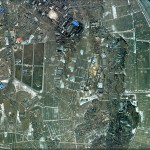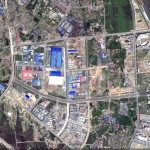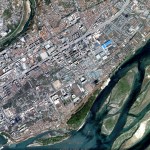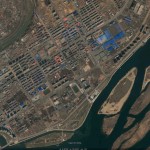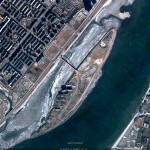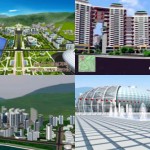The Choson Ilbo begins this story with “Rumor has it”….
Rumor has it that China is getting directly involved in the development of North Korea’s Rajin-Sonbong Port, once the center of the UN Development Programme’s Duman (or Tumen) River project in 1991. A source in Beijing said Wednesday, “As far as I’m aware, North Korea and China’s Commerce Ministry recently signed a memorandum of understanding outlining Beijing’s investment of US$3.5 billion over five years beginning next year” in the special economic zone there. The source said China is investing in roads, ports and gas facilities in the region.
The Rajin-Sonbong area, at the mouth of the Duman River, is a strategic point of economic cooperation between the two countries, but neither bank is Chinese territory. One side is in North Korea and the other in Russia, so to get to the East Sea China had to borrow a port from either side. China did nothing about the UNDP initiative in the 1990s, but since the mid-2000s, it has set its eyes on the area.
North Korea for some reason rented out the best equipped dock there to Russia in 2008 but since last year it has been seeking investment from China to overcome dried-up aid from South Korea amid international sanctions. North Korean leader Kim Jong-il urged Chinese President Hu Jintao when he visited China in May this year to invest in the region.
But the rumor of direct investment from the Chinese government has not been confirmed. One diplomatic source in Beijing said, “I’ve heard nothing about the Chinese Commerce Ministry’s direct involvement in negotiations. It’s just one of many rumors since North Korea became active in developing the Rajin-Sonbong area.”
UPDATE from the Choson Ilbo:
Chinese officials with close ties with North Korea say the North has used to demand hard cash for business deals but is now taking a more flexible approach. The Global Times, a sister publication of the People’s Daily, published a series of reports Saturday about the Rajin-Sonbong special economic zone of North Korea.
It said street lights and neon signs powered by windmills have appeared in the region, which had earlier been pitch dark at night, while the previously ubiquitous soldiers have vanished.
North Korea allowed 4,000 Chinese residents in the area to rent commercial property and agreed to designate an area in the Rajin-Sonbong special economic zone to be jointly administered by the two countries.
North Korea had offered China to develop one or two islands in the estuary of the Apnok River on a 50-year lease, but when China demurred it apparently offered a 100-year lease and even allowed construction of golf courses and other recreational facilities.
…
Many private Chinese companies are reticent about investing in North Korea. Not only is there a lack of business laws to protect their investment, there are also too many political uncertainties. As a result, the Chinese government is not playing a very active role. In the case of the bridge across the Apnok River, North Korea apparently wanted Chinese state-run companies to take part in construction, but Beijing declined.
One source in Beijing said some Chinese companies are showing great interest in developing the Rajin-Sonbong area, but most are biding their time. “Chinese businesses still don’t seem to trust the sincerity of North Korea’s desire to open up its economy,” the source added.
Additional Information:
1. The Chinese and Russians currently lease docks at Rajin. You can see a satellite image of them here.
2. Here is more information on China’s 10-year lease of Rajin.
3. Here is information on the Yalu Islands China is reportedly leasing.
5. Here are all previous Rajin (Rason)posts
Read the full stories here:
Beijing ‘Pouring Money into N.Korea’s Special Economic Zone’
Choson Ilbo
12/30/2010
N.Korea’s Cross-Border Business with China Picking Up
Choson Ilbo
12/30/2010

